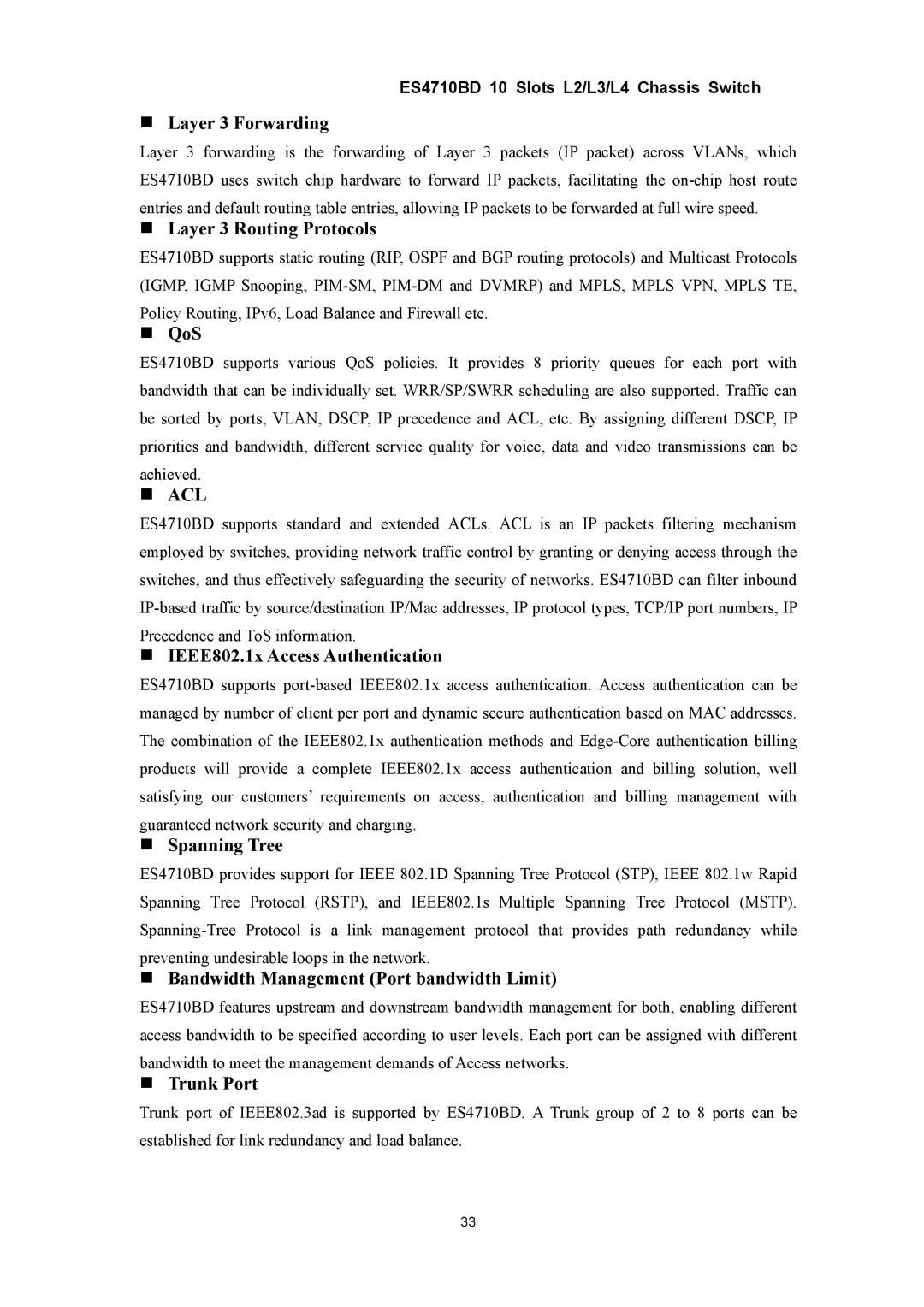ES4710BD 10 Slots L2/L3/L4 Chassis Switch
Layer 3 Forwarding
Layer 3 forwarding is the forwarding of Layer 3 packets (IP packet) across VLANs, which ES4710BD uses switch chip hardware to forward IP packets, facilitating the
Layer 3 Routing Protocols
ES4710BD supports static routing (RIP, OSPF and BGP routing protocols) and Multicast Protocols (IGMP, IGMP Snooping,
QoS
ES4710BD supports various QoS policies. It provides 8 priority queues for each port with bandwidth that can be individually set. WRR/SP/SWRR scheduling are also supported. Traffic can be sorted by ports, VLAN, DSCP, IP precedence and ACL, etc. By assigning different DSCP, IP priorities and bandwidth, different service quality for voice, data and video transmissions can be achieved.
ACL
ES4710BD supports standard and extended ACLs. ACL is an IP packets filtering mechanism employed by switches, providing network traffic control by granting or denying access through the switches, and thus effectively safeguarding the security of networks. ES4710BD can filter inbound
IEEE802.1x Access Authentication
ES4710BD supports
Spanning Tree
ES4710BD provides support for IEEE 802.1D Spanning Tree Protocol (STP), IEEE 802.1w Rapid Spanning Tree Protocol (RSTP), and IEEE802.1s Multiple Spanning Tree Protocol (MSTP).
Bandwidth Management (Port bandwidth Limit)
ES4710BD features upstream and downstream bandwidth management for both, enabling different access bandwidth to be specified according to user levels. Each port can be assigned with different bandwidth to meet the management demands of Access networks.
Trunk Port
Trunk port of IEEE802.3ad is supported by ES4710BD. A Trunk group of 2 to 8 ports can be established for link redundancy and load balance.
33
